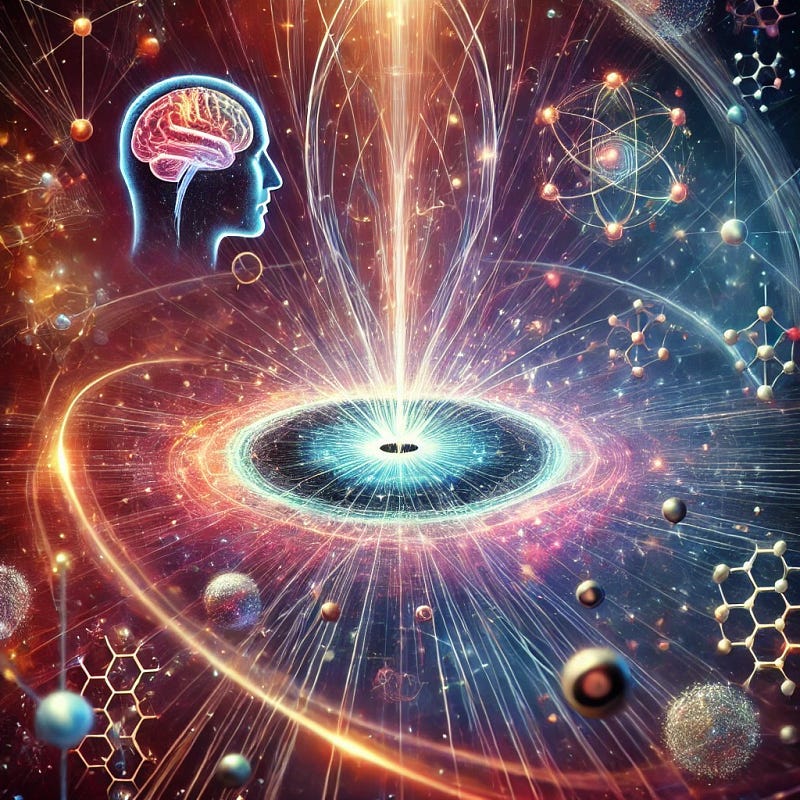Magnetic Entanglement: The Force Linking Mind, Matter, and Machines
Unlocking the Hidden Powers of Quantum Connectivity
Exploring the revolutionary concept of magnetic entanglement — where magnetism becomes the bridge for quantum interactions, connecting consciousness, computation, and the fabric of reality.

Exploring Quantum Connectivity
“Magnetic entanglement” is a term increasingly explored in physics and quantum mechanics, describing a fascinating relationship where magnetic properties in particles or systems become entangled, forming a complex, nonlocal connection. This concept intersects with quantum entanglement, where two or more particles become interlinked so that the state of one instantly affects the state of the other, regardless of distance. When applied to magnetism, this connection suggests the possibility that magnetic fields, or even magnetic states of particles, could participate in or facilitate entanglement. This not only raises the question of how magnetism could affect or drive quantum interactions but also opens the door to novel technological applications.
1. Foundational Concepts: Entanglement in Quantum Mechanics
Quantum entanglement is a fundamental phenomenon in quantum physics, where particles, after interacting in certain ways, become “entangled” and their states remain interdependent. Observing or changing the state of one particle will simultaneously impact the state of the other, no matter the distance. In the context of magnetism, magnetic entanglement suggests that particles with magnetic properties, like spin states of electrons, could form a type of quantum linkage based on their magnetic orientation or field interactions.
2. Magnetic Spin and Entanglement
Spin, an intrinsic property of particles like electrons, protons, and even larger composite particles, is often associated with magnetic properties. Electrons, for example, behave like tiny magnets due to their spin, and they can interact with each other’s spins through a magnetic interaction known as “exchange coupling.” This interaction underlies magnetic phenomena in materials, and when electrons become entangled via their spins, their magnetic orientations are also entangled.
This magnetic spin entanglement plays a key role in potential quantum computing technologies, especially those involving spin qubits. Spin qubits, as opposed to charge-based qubits, are appealing for their stability and low energy requirements, and they may benefit from entanglement properties based on magnetic interaction.
3. Magnetism as a Medium for Quantum Communication
Magnetic fields could provide a pathway for enhancing or even establishing entanglement, acting as a medium to maintain coherence between entangled states. Research has shown that under certain conditions, magnetic fields can sustain or strengthen entangled states between particles by stabilizing their quantum coherence. This quality opens up the possibility of using magnetic fields as a robust channel for quantum communication, potentially creating entangled links between particles across significant distances.
For example, a magnetic field could theoretically facilitate the transfer of entangled states between two separated systems, leading to a form of communication based on “magnetic entanglement.” This would allow quantum systems to transfer information without requiring traditional forms of signal transmission.
4. Applications and Future of Magnetic Entanglement
Quantum Computing and Information Processing: Using magnetic properties for qubit entanglement could be a path forward in developing stable quantum computers. Spin-based quantum computing benefits from magnetic entanglement because spin states are less susceptible to interference than traditional charge-based states.
Quantum Networking and Secure Communication: Magnetic entanglement could play a role in creating secure communication channels. If magnetic fields can help sustain entangled states, magnetic properties could provide an encrypted quantum communication layer that leverages the unique properties of entangled particles.
Understanding Consciousness and Quantum Biology: Speculative research even hints at the idea that biological magnetic fields, such as those generated by neural activity, might interact at a quantum level. Although highly speculative, some theorists wonder if magnetic entanglement could play a role in biological systems, possibly linking quantum processes to consciousness or cognition.
5. Challenges and Open Questions
The concept of magnetic entanglement is still largely theoretical and faces many challenges:
Decoherence: Entangled states are fragile, and even minor disturbances can cause decoherence, disrupting the entangled state. Ensuring magnetic coherence between entangled particles over practical distances remains a significant challenge.
Measurement and Control: Manipulating and measuring magnetic states at the quantum level requires highly precise technology, and small inaccuracies can disrupt the entanglement.
Field Interference: Magnetic fields are prone to interference from nearby magnetic sources. Creating isolated magnetic environments for entangled states is another technological challenge.
6. Theoretical Implications of Magnetic Entanglement
Magnetic entanglement suggests that magnetic fields could play a far more fundamental role in quantum mechanics and potentially even in larger-scale phenomena than previously thought. If magnetic fields can maintain or even enhance quantum entanglement, this could reshape our understanding of how physical fields interact with quantum states. Exploring this could lead to more advanced theories uniting quantum mechanics and classical field theories.
Conclusion
Magnetic entanglement is a promising and speculative frontier in quantum science, intersecting magnetic properties with quantum connectivity in ways that could redefine computing, communication, and perhaps even our understanding of life itself. Although still at an early stage, the idea that magnetic fields could sustain and influence entangled states hints at a deeper role for magnetism in the quantum landscape. If magnetic fields can indeed facilitate and stabilize entanglement, we may be on the brink of discovering new, magnetically-driven dimensions to reality itself.

